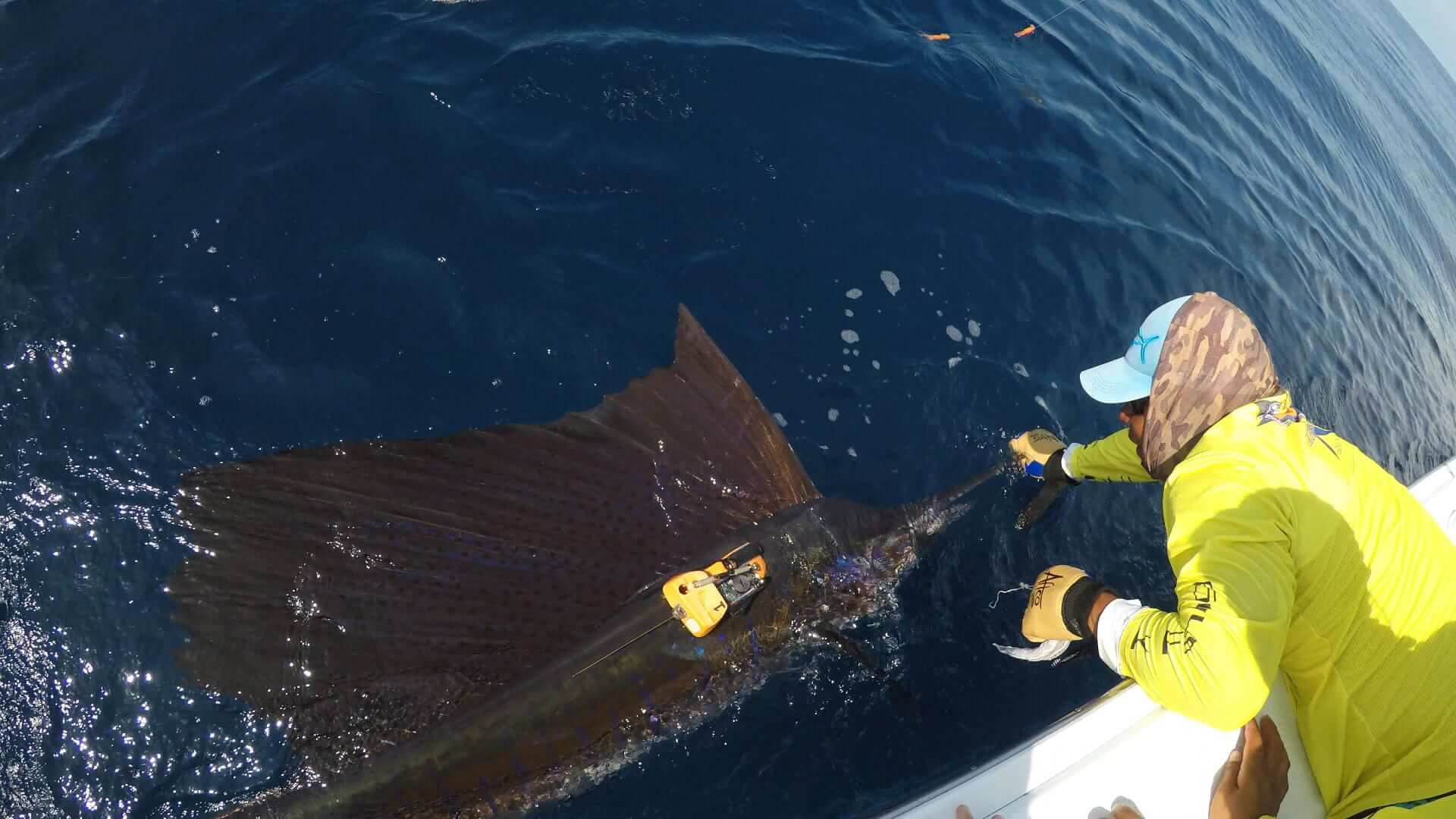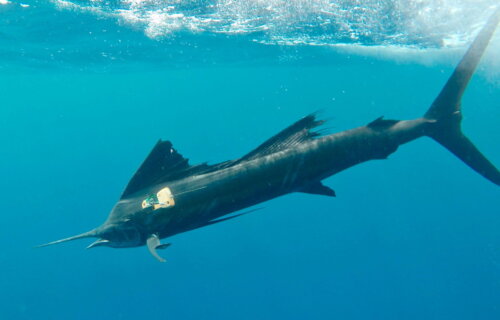FORT LAUDERDALE, Fla. – When you’re studying a creature nicknamed “fastest fish in the world,” expect most of your days to revolve around capturing footage of the speedy animal. For researchers at Nova Southeastern University, all the running around is finally paying off. In their latest study, marine biologists have, for the first time, collected video evidence of how sailfish travel through the ocean on the hunt for their next meal.
The researchers captured rare footage of underwater sailfish hunting using a novel electronic tag package containing high-tech sensors and a video camera. The study took place in Tropic Star Lodge, one of the premier fishing locations in the world, near southwest Panama. The team equipped sailfish with the electronic tag and released them with the help of a recreational fisher. After the fish recovered from their capture and release, the video cameras captured how they behave once they’re on their own and back in the ocean.
“Most of the day they dive back and forth between the surface and the thermocline layer, where the water gets cold,” says study lead author Ryan Logan, a doctoral candidate and research associate at Nova Southeastern University’s Guy Harvey Research Institute, in a media release. “The thermocline can concentrate prey that don’t want to enter the cold water, so it looks like the sailfish might be using this to its advantage.”

Two of the most distinctive features of sailfish are their large dorsal fins and elongated front-end bill that acts like a natural sword for hunting prey. Sailfish are known to slash their way through a school of fish using their bills. The actions not only stun the fish but also gives sailfish an opportunity to cut up and eat them as they move through the group. This type of hunting behavior has been observed many times by wildlife photographers because sailfish often attack near the ocean’s surface. While they do travel in groups, these ocean wanderers have no problem finding food by themselves.
Thanks to evolution, sailfish have other body parts that make them natural hunters. For example, they can keep their eyes and brain warmer than the water around them, giving them an advantage over prey when hunting in colder or dimly lit water. However, these features have a major drawback. They take up a lot of calories, so researchers assume that sailfish need to eat in between group hunting events — though scientists have never seen this behavior, until now.
“Most of what you see in the videos is just a lot of blue water,” cautions Logan. “But when I saw the sailfish start to swim really fast toward the surface, I knew something was up.”

The new video shows a 100-pound sailfish moving fast to the surface from nearly 200 feet deep as it chases a small tuna. The sailfish tries several times to catch the tuna fish — twisting and turning, speeding up and slowing down, and breaking the water’s surface in each attack. The sailfish eventually slowed down into a normal and calm swimming pattern, suggesting it caught its prey.
Since you can’t keep a sailfish in captivity, there are a lot of unanswered questions about how it lives. One question that has been boggling the minds of scientists is how much food they need each day to survive. The footage is helping researchers answer these questions. The video and other information taken from the high-resolution tag gave scientists a rough estimate of how much energy sailfish burned per day. It also helped in calculating how much energy the fish gained back from eating food like the little tuna.
“Based on our estimations, this sailfish needs roughly half of a tuna like this per day to meet energetic demands,” says Logan.
“This research improves our understanding of the hidden lives of these majestic, ecologically and economically very important fishes,” concludes Mahmood Shivji, PhD, a co-author of the study and Director of the Nova Southeastern University Guy Havey Research Institute. “Such knowledge is essential to help us better protect the health of these fish and their prey to have a sustainable sportfish industry for many years to come.”
The study is published in Scientific Reports.

